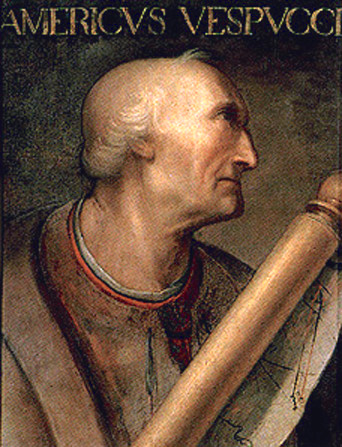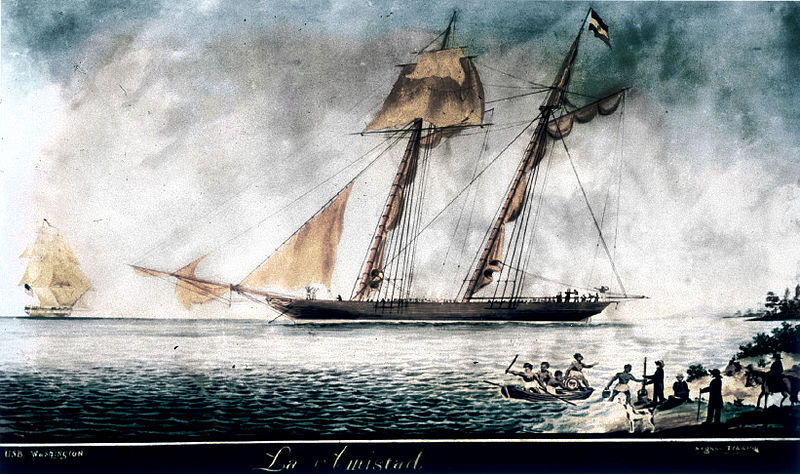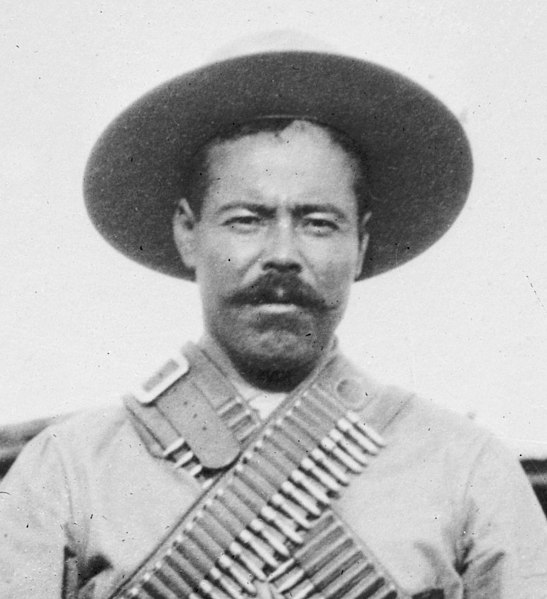This article chronicles pivotal events on March 9th, from early historical milestones to recent achievements.
It spans a wide array of subjects, including significant sermons, exploration, scientific breakthroughs, political milestones, and environmental accords, highlighting humanity’s diverse accomplishments and challenges.
Each event is a testament to human resilience and ingenuity, offering insights into how past occurrences continue to shape our world.
March 9th Events in History
632 – The last sermon of Prophet Muhammad is delivered
This significant event in Islamic history took place during the Hajj, the annual pilgrimage to Mecca, which is the largest gathering of Muslim faithful in the world. Prophet Muhammad delivered his final sermon to a large congregation on Mount Arafat, near Mecca.
Also Read: March 8 – On this Day in History
In this sermon, he summarized the core teachings of Islam, emphasizing equality among humans, the sanctity of life, property, and honor, and the importance of fulfilling obligations to others.
This sermon is considered by Muslims as a consolidation of the key messages of Islam, including the completion of their religion and the finalization of the blessings upon them.

1454 – Amerigo Vespucci, Italian explorer the Americas are named after, is born
Amerigo Vespucci was born in Florence, Italy. He was an Italian explorer and navigator who played a principal role in exploring the New World. Unlike Christopher Columbus, who believed he had found a new route to Asia, Vespucci proposed that the lands discovered by European explorers were part of a new continent.
His letters and accounts of his voyages were widely published and led to the use of the name America, derived from the Latin version of his first name, for the newly discovered continents in the Western Hemisphere. Vespucci’s insight changed European understanding of world geography.
1566 – David Rizzio, the private secretary to Mary, Queen of Scots, is murdered
David Rizzio was an Italian courtier who rose to become the private secretary of Mary, Queen of Scots. His close relationship with the queen aroused jealousy and suspicion among the Scottish nobility and Mary’s husband, Lord Darnley. Rizzio was accused of having an affair with the queen and was suspected of influencing her decisions.
Also Read: March 10th Events in History
On March 9, 1566, a group of nobles, with Darnley’s consent, murdered Rizzio in front of the pregnant queen during a dinner party at Holyrood Palace in Edinburgh. This brutal act further destabilized the already volatile political situation in Scotland.
1796 – Napoleon Bonaparte marries his first wife, Josephine de Beauharnais
This marriage united two prominent figures of the French Revolutionary period. Napoleon Bonaparte, a rising military star, married Joséphine de Beauharnais, a widow of the French Revolution who had navigated the treacherous political landscape with skill.
Despite their passionate relationship, their marriage faced challenges, including Joséphine’s inability to produce an heir and Napoleon’s military ambitions that often kept them apart.
Nevertheless, their relationship is remembered as one of the most iconic romances in history. Napoleon’s love for Joséphine influenced many of his decisions until they eventually divorced in 1809 so that he could marry someone else and produce an heir.
1820 – The Royal Astronomical Society is founded in England
The Royal Astronomical Society (RAS) was established to promote the study of astronomy, solar-system science, geophysics, and closely related branches of science. The society was initially created as the Astronomical Society of London to support astronomical research.
Since then, it has played a pivotal role in the advancement of these sciences, including the publication of significant research findings, the provision of funding for scientific research, and the organization of scientific meetings.
The RAS continues to be a cornerstone of the global astronomical community, fostering international collaboration and the dissemination of knowledge.

1841 – The Supreme Court rules that the Amistad slave ship captives are free individuals
The Amistad case was a landmark decision by the U.S. Supreme Court involving a group of illegally-captured Africans who had seized control of the ship La Amistad in 1839. After being captured off the coast of Long Island, the case for their freedom went to the Supreme Court.
In 1841, the Court ruled that the Africans had been illegally enslaved and had the right to fight for their freedom. This decision was a significant legal and moral victory against slavery, and the captives were returned to Africa. The case gained widespread attention and helped fuel the abolitionist movement in the United States.
1862 – The Battle of Hampton Roads, the first battle between ironclad warships, occurs during the American Civil War
This was the first clash between ironclad warships, marking a pivotal moment in naval warfare. The Confederate ironclad CSS Virginia (formerly the USS Merrimack) sought to break the Union blockade in Hampton Roads, Virginia.
On its first day of combat, the Virginia destroyed two wooden Union ships. The following day, it engaged the Union ironclad USS Monitor in a historic battle.
While neither ship could claim a decisive victory, the encounter signaled the end of wooden warships and the dawn of a new era in naval warfare. The battle had significant implications for future naval design and tactics.
1916 – Mexico’s Pancho Villa leads a raid on the U.S. town of Columbus, New Mexico
This event was part of the Mexican Revolution and the border conflicts between the United States and Mexico. Pancho Villa, a prominent revolutionary leader, attacked the small border town of Columbus, New Mexico, in retaliation against U.S. support for his rivals.
The raid resulted in the death of 18 Americans and caused significant property damage. In response, the United States launched the Punitive Expedition, an unsuccessful military campaign aimed at capturing Villa.
The raid and subsequent military response escalated tensions between the U.S. and Mexico and highlighted the complexities of the Mexican Revolution’s impact on U.S.-Mexico relations.

1932 – Eamon de Valera is elected President of the Executive Council of the Irish Free State
Eamon de Valera, a leading figure in Ireland’s struggle for independence from Britain, played a crucial role in the political development of Ireland in the 20th century. In 1932, de Valera was elected as the President of the Executive Council, effectively the prime minister, of the Irish Free State.
His election marked a significant shift in Irish politics, as de Valera sought to dismantle aspects of the Anglo-Irish Treaty that had established the Free State but left it as a dominion of the British Empire.
Under his leadership, Ireland adopted a new constitution in 1937, declaring itself a sovereign, independent republic with de Valera as its prime minister.
1959 – Barbie, the popular American doll, makes her debut
The Barbie doll, created by Ruth Handler and manufactured by Mattel, Inc., was first introduced at the American International Toy Fair in New York on March 9, 1959. Barbie was a groundbreaking toy, representing a shift in the way children could play with dolls.
Unlike the baby dolls that were prevalent at the time, Barbie was a fashion doll with adult features, allowing children to imagine their futures and engage in role-playing.
Barbie has since become an iconic figure in American culture and the toy industry, with a wide range of versions that include different ethnicities, careers, and themes, though not without controversy over issues related to body image and consumerism.
1961 – Sputnik 9 successfully launches, carrying a human dummy and the dog Chernushka
On March 9, 1961, the Soviet Union launched Sputnik 9, carrying a biological payload including a dog named Chernushka, some mice, and a dummy astronaut nicknamed Ivan Ivanovich. This mission was part of the Soviet space program’s Vostok project, which aimed to send the first humans into space.
The successful flight of Sputnik 9 was a critical step in this process, testing life support systems and recovery procedures. Chernushka, the dog, safely returned to Earth after a single orbit, paving the way for Yuri Gagarin’s historic flight just a month later, making him the first human in space.
1976 – Forty-two people die in a Cavalese cable car disaster, the worst cable-car accident to date
The Cavalese cable car disaster is considered one of the worst cable car accidents to date. On March 9, 1976, a cable car was making its descent from the Cermis mountain in the Italian Alps when its supporting cable snapped, causing the car to plummet nearly 200 meters to the ground.
The tragic accident resulted in the death of 42 of the 43 people on board. The sole survivor was a 14-year-old girl. This disaster raised significant concerns about the safety of aerial lift systems worldwide and led to stricter safety regulations and inspections for cable cars.
1986 – United States Navy divers find the largely intact but heavily damaged crew compartment of the Space Shuttle Challenger; the bodies of all seven astronauts still inside
The Space Shuttle Challenger tragically broke apart 73 seconds into its flight on January 28, 1986. On March 9, 1986, Navy divers discovered the submerged crew compartment on the ocean floor off the coast of Florida.
The discovery was significant because it contained the remains of all seven astronauts who lost their lives in the disaster. The investigation into the Challenger disaster led to major changes in NASA’s shuttle program, including improvements in safety protocols and engineering practices to prevent future tragedies.
1990 – Dr. Antonia Novello is sworn in as Surgeon General of the United States, becoming the first woman and Hispanic to serve in that position
Dr. Antonia Novello made history on March 9, 1990, when she was sworn in as the first woman and the first Hispanic to serve as the Surgeon General of the United States. Novello, a pediatrician and public health administrator, focused on issues such as underage drinking, smoking, and AIDS during her tenure.
She brought attention to the health needs of women, children, and minorities, advocating for better health care access and preventive care. Her appointment was a significant milestone in the representation of women and minorities in high government positions.
1997 – Comet Hale-Bopp makes its closest approach to Earth
Comet Hale-Bopp was one of the most observed comets of the 20th century and was visible to the naked eye for a record 18 months. On March 9, 1997, it made its closest approach to Earth.
Discovered independently by Alan Hale and Thomas Bopp in 1995, Hale-Bopp fascinated both astronomers and the public due to its spectacularly bright appearance in the sky. Its passage was an important event for scientific observation, yielding valuable data on the composition of comets and the behavior of their nuclei and tails.
The comet also became a cultural phenomenon, inspiring both awe and, in the case of the Heaven’s Gate cult, tragic mass suicide.
2004 – An unsuccessful attempt is made to assassinate Iraqi Shiite cleric Grand Ayatollah Ali al-Sistani
On March 9, 2004, an assassination attempt was made on Grand Ayatollah Ali al-Sistani, one of the most influential Shiite clerics in Iraq, in the holy city of Najaf. This attack underscored the volatile and dangerous political landscape in Iraq following the U.S.-led invasion in 2003.
Al-Sistani has played a crucial role in Iraqi politics, advocating for unity, democracy, and the peaceful coexistence of Iraq’s diverse ethnic and religious communities.
His leadership has been pivotal in shaping post-Saddam Hussein Iraq, making him a target for various insurgent groups who opposed his vision for the country.
2011 – Space Shuttle Discovery makes its final landing after 39 flights
The Space Shuttle Discovery completed its final mission and landed at the Kennedy Space Center on March 9, 2011, marking the end of its operational life. Over its 27 years of service, Discovery became NASA’s most-flown space shuttle, contributing significantly to space exploration.
It played key roles in the deployment of the Hubble Space Telescope, the construction of the International Space Station (ISS), and conducting vital research in low-earth orbit.
Discovery’s retirement was part of the winding down of the Space Shuttle program, which concluded later that year, signaling the end of an era in American spaceflight.
2015 – Two helicopters collide in Argentina, killing 10 people
On March 9, 2015, a tragic accident occurred when two helicopters collided in mid-air near Villa Castelli, in La Rioja Province, Argentina. The helicopters were carrying a group of French athletes participating in the reality TV show “Dropped” when the collision happened shortly after takeoff.
All ten people on board, including the pilots and several well-known athletes, were killed. The incident shocked the international community, raised questions about the safety measures in reality TV productions, and led to a thorough investigation to determine the cause of the collision.
2018 – A Bangladesh Airlines plane crashes and bursts into flames at Kathmandu airport, killing at least 50 people
On March 9, 2018, a US-Bangla Airlines flight from Dhaka, Bangladesh, crashed during its landing attempt at Tribhuvan International Airport in Kathmandu, Nepal. The accident was one of the deadliest aviation disasters in Nepal’s history.
The aircraft veered off the runway during landing and caught fire, leading to significant loss of life. The incident brought to light issues regarding aviation safety standards and the challenges of flying in Nepal’s mountainous terrain, prompting calls for improvements in pilot training and airport infrastructure.
